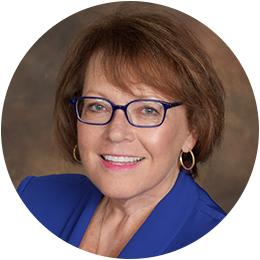
Management of medical staff services/centralized credentialing departments has become increasingly more complex over the past few years as a result of:
- The introduction of delegated credentialing relationships that must be managed.
- CMS and the accreditation organizations (DNV, The Joint Commission and HFAP) raising the bar related to privileging –designing and implementing criteria-based privileges is no longer something to put on the back burner as a project to be accomplished when there is time to tackle it.
- The evolution of privilege forms for advanced practice professionals, particularly for physician assistants and nurse practitioners (NP). A “one size fits all” form no longer works. For example, a privilege form for an NP who works in a general pediatrics clinic is quite different from a privilege form for a NP who works in the NICU.
- Requirements related to OPPE (ongoing professional practice evaluation) and FPPE (focused professional practice evaluation) that were formally introduced into the Joint Commission survey process in 2008. Many organizations are still struggling to determine how to meet, manage and document these requirements.
- An increasing number of medical staff services/credentialing departments manage the credentialing needs of employed/contracted providers. For example, if an employed physician holds multiple other hospital appointments and managed care relationships, the department is responsible for completing applications, providing documents, etc. to the organization(s) where the employed practitioner is applying.
- The increased intensity of data-gathering to verify current competence. Once criteria for privileges has been defined, the organization must provide validation that applicants meet the established criteria.
Finally, because the percentage of employed/contracted providers has risen (in some organizations dramatically), credentialing and the onboarding process is the focus of a lot of scrutiny related to timeliness and reduction of duplication of effort –particularly between recruitment and the credentialing department.
Although it is highly unlikely that the work will become less complex, the good news is that there is technology out there that can help departments manage the increased workload. Unfortunately, some medical staff professionals (MSPs) have not been trained to use this technology or have avoided embracing technology in favor of doing things the way that they have been done in the past. For example, while consulting at organizations across the country, I’ve seen the following:
- A Medical Staff Office (that acts as a CVO for organizations within the health system) that has yet to use the functionality of the credentialing database implemented years ago. They have four people manually credentialing 1,000+ providers. They are stretched to their limit. However, they really aren’t interested in changing the way they perform their work.
- A large academic medical center that credentials over 1,300 providers still collects copies of diplomas, certificates of completion of internship, residency and fellowship programs, board certification, etc. They gather these certificates, file them, verify the information from the primary source, and file that paperwork. Their credentials files are huge!
- A medical center, which has purchased excellent credentials software that includes an electronic workflow, still uses manual checklists to identify what has been received during the credentialing process. That means that every time one of the 500 new providers credentialed annually calls the Medical Staff Office to find out the status of his or her application, an MSP must dig through files to consult the checklist. I was in the MSO to witness the panic to find the file when the CMO called regarding the status of a file. The inquiry was prompted by a physician applicant’s call to administration complaining about how long the credentialing process was taking.
- One organization sends paper copies of privilege forms all over the organization because the credentials department hasn’t had the time to enter privileges into the credentialing database. The organization should use this database to make privileging forms available electronically to departments that need to confirm a practitioner’s privileges.
These are just a few of many examples I could share. Credentialing and medical staff services professionals must take advantage of available technology. Although there still are some organizations that don’t have access to good technology, it is my experience that it is more often the case that credentialing and medical staff services departments aren’t maximizing the use of the technology at their fingertips.
Take a look at the technology that is available in your department. Have you reached the limits of how you can use what you have? Are there tasks that could be automated that haven’t yet been tackled? If you are lagging behind, make this the year that you put a plan together to use technology to run a more efficient department.
